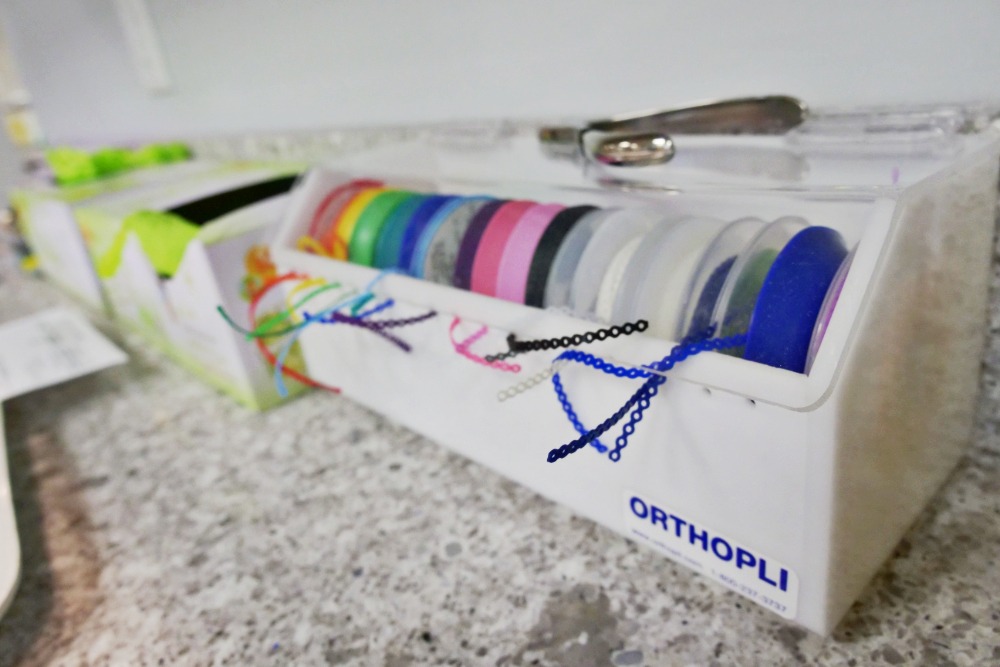Metal Braces
Metal Braces in Southington CT
Traditional metal braces are the most common type of orthodontic treatment. They’re time-tested, proven and reliable.
These orthodontic workhouses have a long history of successful treatment and are incredibly efficient at correcting oral issues.
What Are Braces Made Of?
Brackets
The brackets are typically made from a mix of stainless steel, nickel, and other metals, and are very durable and long-lasting. Brackets have little hooks or doors, over which the wire is threaded. A bracket can be secured by closing the door, or by applying an elastic over the top of the wire.
Glue
This is what we will use to attach the brackets to your teeth. Although some orthodontists may attach the brackets to a metal band which is then crimped around the tooth to hold it in place, it’s much more common these days to attach the bracket directly to the tooth with glue. In cases that require more serious treatment, metal bands may be used together with glue to give the braces more leverage and stability.
Wire
This thin piece of metal runs from one bracket to another. We’ll change the shape and curvature of the wire in order to move your teeth in the desired direction. Today’s braces are much more comfortable than the past, thanks to shape-memory NiTi wires. Using the same technology as NASA, NiTi wires exert a continuous force against the teeth to move them in the right direction, eliminating the need for wire tightening. This reduces your overall time in braces – and much of the discomfort.
Elastics
Elastics are essential for patients who need to correct their bite. Most often, they’re strung between an upper bracket hook and a lower bracket hook, pulling the upper jaw backward to correct an overbite, or the lower jaw backward to correct an underbite. You may also need rubber bands to help bring your front teeth together or to increase the number of teeth you show when you smile.
Other Words You May Hear Dr. Demas Mention

Orthodontic Bands
These are stainless steel rings that are cemented to the teeth using dental bonding agents. These bands can provide an anchor for the braces and oftentimes orthodontic appliances, but they are not used with all patients.
Spacers
These small elastic “donuts” or rings can be used to create space in between the teeth when needed, typically before bands are placed. They are also referred to as separators.
Elastic Ties / O-Rings / Ligatures / Colors
These tiny rubber rings or bands can be used to attach the archwire to the brackets. They are less rigid than spacers and come in dozens of colors.
What to Expect from Today’s Metal Braces
In the past, metal braces had a reputation for being a bit awkward and obvious, but modern orthodontics has produced versions that are smaller, less conspicuous, and far more comfortable than ever before.
Sleeker brackets and lighter wires improve the appearance and feel of our metal braces and help keep irritation in the mouth to a minimum.
In the past, metal braces had a reputation for being a bit awkward and obvious, but modern orthodontics has produced versions that are smaller, less conspicuous, and far more comfortable than ever before.
Sleeker brackets and lighter wires improve the appearance and feel of these braces and help keep irritation in the mouth to a minimum.
In the past, metal braces had a reputation for being a bit awkward and obvious, but modern orthodontics has produced versions that are smaller, less conspicuous, and far more comfortable than ever before.
Sleeker brackets and lighter wires improve the appearance and feel of our metal braces and help keep irritation in the mouth to a minimum.
In the past, metal braces had a reputation for being a bit awkward and obvious, but modern orthodontics has produced versions that are smaller, less conspicuous, and far more comfortable than ever before.
Sleeker brackets and lighter wires improve the appearance and feel of these braces and help keep irritation in the mouth to a minimum.
